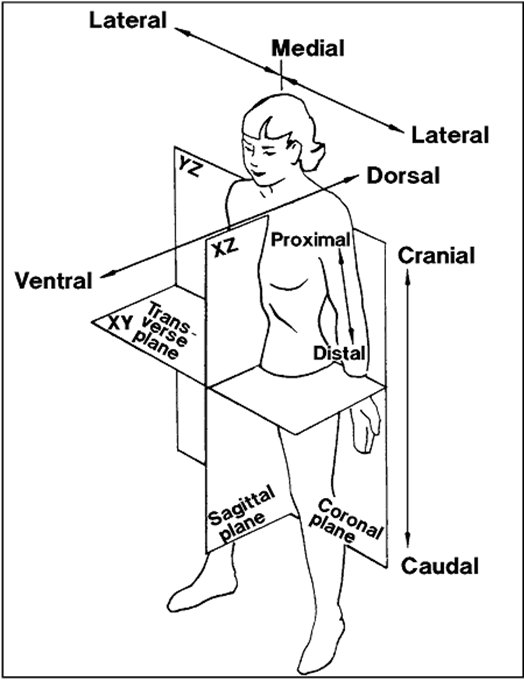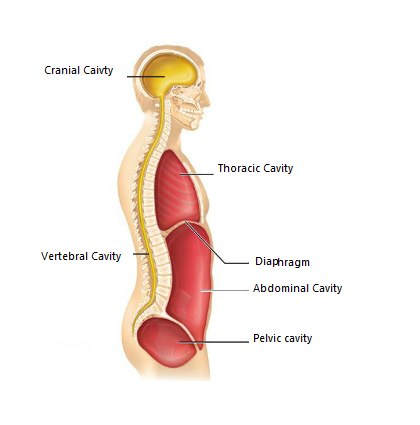In dealing with and knowing terms for directions of the body, we can also better explain where we want someone to massage US! So not only do aspiring massage therapists need to know this in order to massage, but this is key to having good communication with your massage therapist. It will help you get a better massage, and who doesn't want a better massage?!
To start with, all positions begin with being in the anatomical position. This is the anatomical position to the right.
Next we want to know, or decide, if we are going to lie supine, with our face up, or prone, with our face down? Or if we are pregnant, we may need to go side-laying on the massage table.
Depending on the equipment a massage therapist has, being on your side may be the only option from even the first few months of pregnancy, depending on your level of discomfort. (I plan of getting a good cushion to allow for being prone when pregnant, as it is very comfortable I found.)
Other things we will want to get clear is how to direct the person massaging us by going up or down. Using the correct massage terms we would say instead, "superior" or "inferior".

It means specifically that if we want someone to go toward the head, we say "superior". If we want someone to go more toward the feet, we say inferior. Not to say short people are inferior or something, as my short grandma always said, being short gives you a better pick of the guys.
If we want someone to move towards the front of the body we say "ventral", and more to the back we say "dorsal". Or we can say anterior or posterior to describe the whole of that side. (Posterior being your backside of course.)

When we want the body rubbed closer to the middle of the trunk we say, "go medial from there."
When we want it out from the body, we say, "go lateral from there." Towards your head the direction is cranial of course, while towards the feet is the direction of caudal.
The appendages are the only parts that can use the directive terms of Distal and Proximal. Distal is always a longer distance from the trunk of the body, while Proximal is in the proximity and closer.
There are also planes. . .

The planes are a little trickier. . .and much more general.
We have:
A. the coronal plane
B. the sagittal plane
C. the transverse plane
A plane is called?
B plane is called?
C plane is called?
 Without actually learning all the specific muscles, we can generalize regions of the body to direct someone, or to just sound smart. ;)
Without actually learning all the specific muscles, we can generalize regions of the body to direct someone, or to just sound smart. ;)Here are the ones in the spine. Most of them have some pretty easy memory hooks.
Cervical means neck.
Thorax means chest, and if you can remember that, you have got the right area of the spine.
Lumber is where you put the lumber support pillows.
Sacrum is what you sit on, and what often breaks.
Sadly there are a lot more regions to remember though. . .

A few uncommon and not so obvious ones are the Acromial, on the top of the shoulder, and scapular on the bony back of it. Also the popiteal on the back of the knee, and the patellar on the front of the knee. Then there is the crual on the shin (it would be cruel to kick there) and the sural to the back of it. Also the elbow is called the cubital, while the back of it is called the antecubital.
These and other things are not as useful in getting a massage, but sure are good to know if you are trying to take a test to be certified to be the one giving one!
Things we also need to know are the body cavities. . .


So let's practice:
1.
2.
3.
4.
5.
6.
Dividing up the body in another way we have the 4 abdominal quadrants. Right upper, left upper, right lower, left lower. . .pretty self explanatory. Generally we only divide them into 4, but they are also divided into 9. Which we for some reason also need to know for the test we take to be certified. So here's a painless way to study those. . .if you can concentrate on the words ;)

My tendency is to see the body as a whole, and not in divisions though. So I will get into the whole body and the way it looks and works more in the next post called: Bodies, major muscles and their workings.